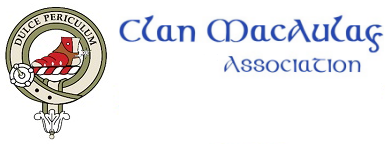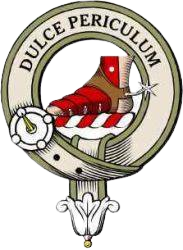 Overview
Overview
Millions of people worldwide participate in DNA testing. Reasons for doing so vary, but the desire to find “Genetic Cousins” whose family research might provide clues to one’s common ancestors is at the top of many lists. Once the test is complete, your results are compared with others who have taken the same type of test at the same company. People who share DNA with you will be on your “match list”.
The amount of DNA you share with an individual on your match list gives you a clue as to how closely you are related to that person. The number of individuals on your match list is determined solely by how many (if any) genetic relatives have taken the same test with the same company. Many people test at more than one company in order to compare with as many others as possible. For a nominal fee, some testing companies allow you to import your results from another site to their site. This allows you to compare your results with a different population of testers.
Completion of the DNA test and receipt of your results is not the end of the process, but the beginning. What you do next is dependent on your goals and on the type of test you have taken. For example, many people reach out to their matches to collaborate and to attempt to determine common ancestor(s). The DNA testing companies, as well as third party software companies, have provided on-line tools and, in the case of FamilyTreeDNA (FTDNA), Project Administrators (live people) to help with that process. Remember that “DNA testing is a team sport” (Mike Walsh, R1b Haplogroup Project Administrator). Collaboration with people on your match list and sharing your family tree and test results will provide you with the most benefit in the long run. Without sharing your results, it’s impossible to compare with other testers.
Numerous MacAulays have taken DNA tests, including many official members of the Clan. DNA testing combined with traditional genealogy is a powerful aid to unlocking the mysteries of our common ancestry. Currently, three types of DNA tests are offered to the general public. What you want to learn about yourself and/or your ancestors will determine what test(s) you choose to take. The names of the tests tell you what genetic material is tested.
Perhaps you are wondering just what test(s) you should take or if DNA testing is for you. Guidance on these matters and the opportunity to tap into these discoveries is are benefits enjoyed by Clan members and members of the DNA projects at FTDNA.
Types of DNA Testing
-
- Autosomal DNA (atDNA) – for males or females. This test has the potential to discover relatives on ANY line of your family, as far back as 4-6 generations. This test measures the genetic material we inherit from both parents in our 23 chromosomes. We inherit 50% of our atDNA from our mother and 50% from our father. A random process called “recombination” determines which bits of DNA each child inherits. In preparation for creating a child, each parent’s atDNA breaks up into pieces and gets put back together (i.e., recombines). Because the amount of genetic material between them varies, even full siblings are unlikely to have identical match lists. With each subsequent generation, DNA from earlier generations is depleted by approximately half. Therefore, getting atDNA tests for the older people in the family is often a priority. Our elders are more likely to have higher quantities of DNA from earlier generations, increasing the chances of finding genetic matches representing relationships farther back in time. Being born with a MacAulay surname is not required for an atDNA test to be useful for MacAulay research. If you have a MacAulay ancestor in your direct maternal or paternal lines within the last 4-6 generations, it’s possible that an atDNA test will be of use when tracing your MacAulay lineage. Ethnicity estimates are another interesting aspect of atDNA test results. Most testing companies maintain large “population databases”, which contain information about DNA test results as they pertain to ethnicity. This is a young science, but it can still provide valuable insight into the ethnicity of one’s ancestors. Because each company’s database is different, individuals who test at more than one company often notice differences between the estimates. Currently, these estimates are broadly accurate, but, as more people worldwide test, ethnicity estimates will become finer tuned.
-
- Y-DNA – for males only. Y-DNA is passed from father to son, so this test follows only the direct male line (your father, his father, his father, etc.). Basic Y-DNA testing (“short tandem repeat (STR) tests”) such as the Y-37 and Y-111 tests can identify males that share a common ancestor in the last 1,000-1,500 years. However, exciting new advances in Advanced Next Generation Sequencing (NGS) tests like the Big Y-700 at FTDNA are making it possible to identify Y-DNA relationships from more recent times – in some cases, to within 2 or 3 generations. This is accomplished because NGS is able to identify much more stable and reliable SNP mutations (a SNP is a change in your DNA code at a specific point). This allows for the reconstruction of a true genetic tree across entire families and can verify whether hypothesized genealogies are in fact correct. Women can participate by encouraging their male MacAulay relatives to test. There are several Y-DNA projects applicable to MacAulays each administered by experienced DNA genealogists to help you interpret your results and further your personal, as well as our collective, research. Clan Members have additional access to these individuals as well as the body of knowledge built up so far as a result of MacAulay men from around the world.
-
- Mitochondrial DNA (mtDNA) – for males or females. mtDNA is inherited by male and female children from their mothers, and only mothers can pass it on. So, mtDNA tests the mother’s direct line (your mother, her mother, her mother, etc.). Because mtDNA can be inherited essentially unchanged over centuries, these tests can be useful for ruling out non-matching individuals. Since mtDNA rarely mutates, an mtDNA test match could indicate a recent common ancestor or one from many hundreds of years ago, making this test less useful for family research within a genealogical time frame.
DNA Data Security
All the large DNA-testing companies have sophisticated data security systems to protect their customers’ test data. You always maintain ownership of your DNA and DNA data—you can manage, export, and even delete it as described in the company’s Privacy Statement. You can choose any level of visibility, although complete invisibility would not further a goal of collaboration for ancestry discoveries. All sites offer the ability to see matches without revealing your identity. Each company has its own security policy. Here are links to the major sites:


